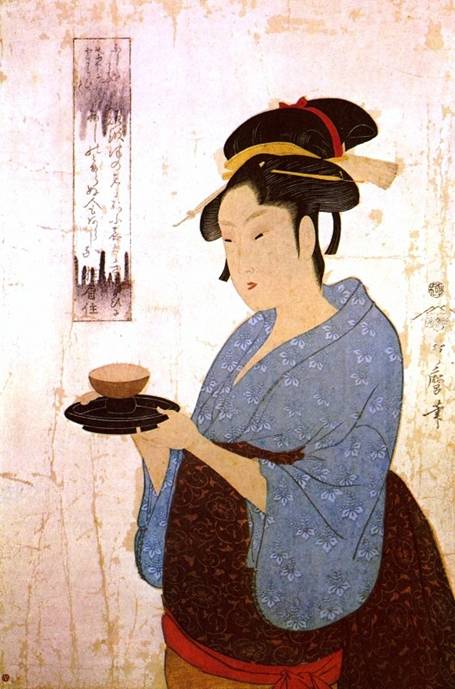Kitagawa Utamaro was a renowned Japanese printmaker and painter born in 1753 in Yoshiwara, Edo (present-day Tokyo). Kitagawa’s talent was first noticed by the publisher Tsuta-ya Juzaburo, who became responsible for printing Kitagawa’s subsequent works. His art education began under Toriyama Sekien, who was rumored to be Kitagawa’s father due to the close relationship they both shared.
Kitagawa made block prints referred to by the Japanese as pictures that float on air. Asides from block prints, Kitagawa also made book illustrations of insects, birds, and shells. At 22, Kitagawa’s published his first artwork – a book cover illustration. He made this publication under the name Toyoaki. This publication helped Kitagawa gain recognition in 1793.
Kitagawa Utamaro’s career abruptly ended after he made prints of the military ruler Toyotomi Hideyoshi and his concubines. The military ruler found the prints disrespectful, and arrested Kitagawa and jailed him for fifty days. After his release, Kitagawa was too emotionally broken, and his career declined. Kitagawa died on 31 October 1806 at the age of fifty-three.
What was Kitagawa Utamaro Known For?
Kitagawa Utamaro was known for his portraits and paintings of female Japanese beauties. The women had elongated features, especially a large head, and the pictures were referred to as “bijin okubi-e.” He was one of the most revered artists of the Ukiyo-e, a name given to woodblock prints and pictures.
Who was Kitagawa Utamaro Influenced By?
Kitagawa Utamaro was influenced by Kiyonaga, the most successful portrait artist of the 1780s. He painted portraits of graceful beauties, and Kitagawa followed in his steps adopting the style. Shunsho of the Katsukawa school also influenced Kitagawa’s artwork, who introduced the “okubi-e”(large-headed picture) painting.
What Art Movement is Kitagawa Utamaro Associated With?
Kitagawa Utamaro is associated with the Ukiyo-e art movement – a Japanese style of painting woodcut pictures.
Kitagawa Utamaro Artwork
Throughout his career, Kitagawa produced over two thousand prints and over a hundred book illustrations and paintings. Some of the Kitagawa’s artworks can be found below:
A Scene On The Bridge

Ase o fuku onna
Beauties on the River Bank

Beauties, Blossoms and Cart

Beauty

Children in front of Mount Fuji

Enjoying The Cool Evening Breeze on the Bridge

The Hour of The Bear

The Hour of The Dog

The Hour of the Dragon

The Hour of the Dragon

The Hour of the Mouse

The Hour of the Rooster

The Hour of the Snake

Hyōgorō and Hinakoto (The Courtesan Hinakoto of the House of Hyōgo)

Komurasaki of the Tamaya House After a Bath

Mirror of Time

Needlework

On Top and Beneath Ryōgoku Bridge

Portrait of Naniwaya Okita

Prelude to Desire

Courtesan Konosumi

Stylish Amusements

Takashima Ohisa

The Awabi Fishers

The Hour of The Dog

The Oiran Yoso-oi Seated at Her Toilet

The Palanquin

Two Courtesans

Woman

Yamamba and Kintaro


